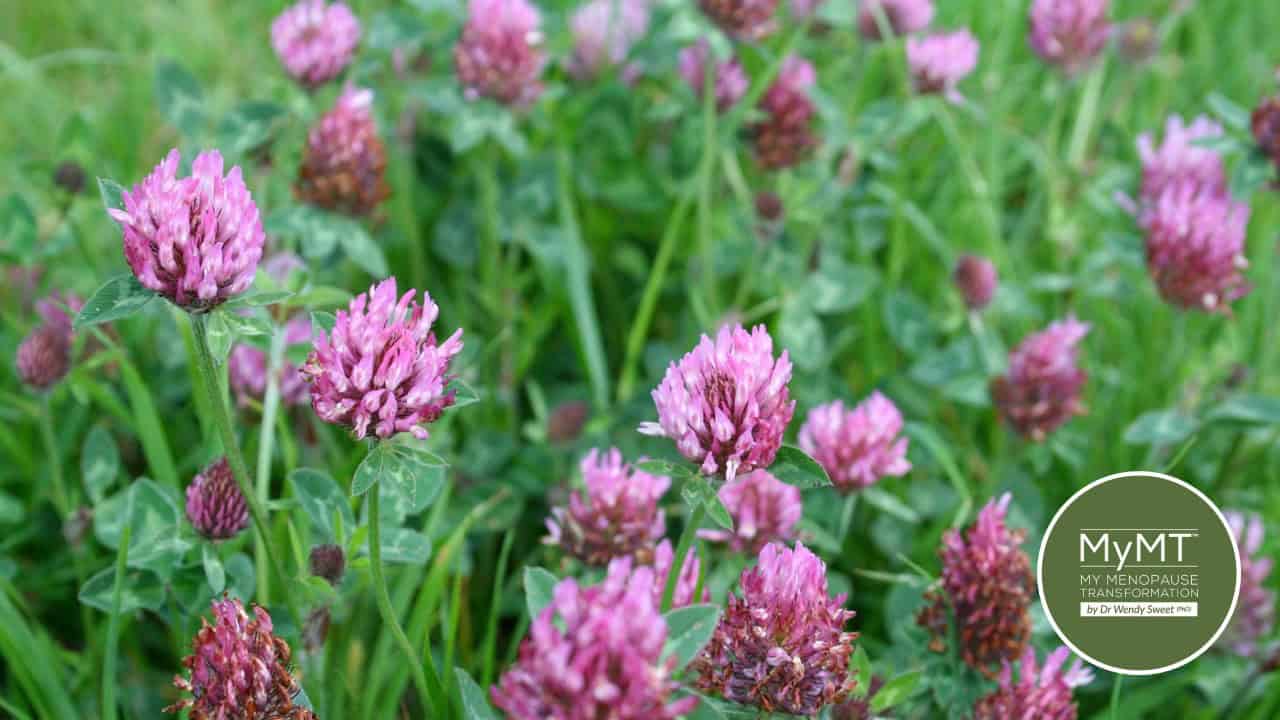Red clover used to grow in the paddocks where I grew up in the South Island of Aotearoa/ New Zealand. In summer the honey bees would hover enthusiastically around the beautiful purple-coloured flowers – how it got to be called ‘red’ is beyond me.
The flowers are globe-like, can vary in colour from a very soft pink to dark purplish pink and are the medicinal part of the plant. Sometimes, as kids, we would pick one and suck on its sweetness. Back then I had no idea that red clover was full of nutrients that are known to act as healing components in cells.
Nor did I know that the flowers have oestrogenic activities and would go on to fuel the menopause related bio-identical hormone industry.
Go on, have a look at your bio-identical hormone medications if you have them, or those expensive supplements that sit on your pantry shelf as mine used to – perhaps the ingredients list says that they contain red clover. Or maybe they contain other sources of phytoestrogens from soy, flaxseed oil or even, parsley.
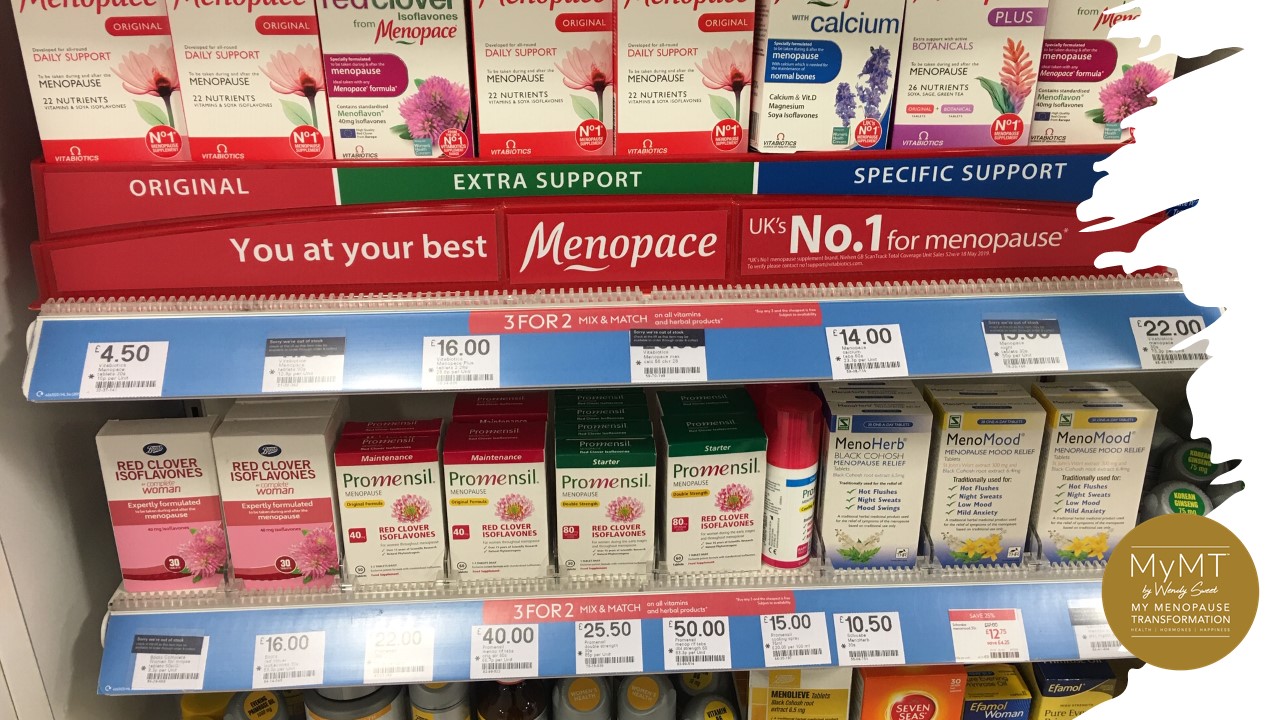
There are numerous foods that contain different amounts of phytoestrogens and some of you might benefit from adding these foods to your diet, and some of you might not. It depends.
What it depends on, are three main issues:
- Whether you are overweight and therefore, need to reduce your sources of oestrogen until you lose weight and are in post-menopause, when oestrogen levels are at their lowest, or
- Whether you have a healthy liver, which is the site of excess oestrogen clearance in your body. If your liver isn’t doing it’s job of clearing oestrogen, then excess sources may get stored in fat cells. Your fat cells love storing oestrogen and yes, this includes your breast tissue.
- Whether or not you are sensitive to all forms of oestrogen, e.g. in some breast cancers.
What are Phytoestrogens?
Phytoestrogens are naturally occurring non-steroid plant compounds that are structurally similar to estradiol, (also called oestradiol). Estradiol, is an estrogen steroid hormone and the major female sex hormone.
Oestradiol binds to oestrogen receptors. Hence, certain plant chemicals that mimic the action of oestradiol, bind to these receptors too, thereby helping to regulate the decline of oestrogen in the body. If you are taking man-made pharmaceutical bio-identical hormones or menopause supplements, then have a look at the ingredients list. They will inevitably contain different sources of phytoestrogens.
There are four main groups of phytoestrogens:
- Isoflavenoids
- Flavonoids
- Stilbenes
- Lignans
A wide range of plants and the products that are derived from these plants sources contain oestrogens which has some chemical affinity to oestrogen receptors in the female body. But that’s as far as the similarity goes.
They behave differently to female oestrogen and this depends on the status of the internal oestrogen environment. This includes whether a woman is in peri-menopause, so has higher oestrogen production still, or is in post-menopause when oestrogen production has declined and is at its lowest as well as how the plant-sourced oestrogens bind to the oestrogen receptor and particularly to which oestrogen receptor they bind to.
The rise of phytoestrogens in the discussion about menopause symptom relief come from studies reporting that one of these isoflavones, called Genistein, has a positive effect on reducing hot flushes and improving cardiac health in post-menopause.
This is why isoflavones have increasingly appeared on the shelves of pharmacies and health supplement shops targeting women in mid-life.
I’m sure many of you have spent, or are spending a lot of money on these products as I used to as well. The more I read about phytoestrogens however, the more I realised that in peri-menopause, I needed to focus on strategies to lose weight (which included less oestrogenic foods initially). Then, once I was through menopause, I could add foods which contained natural sources of oestrogenic compounds.
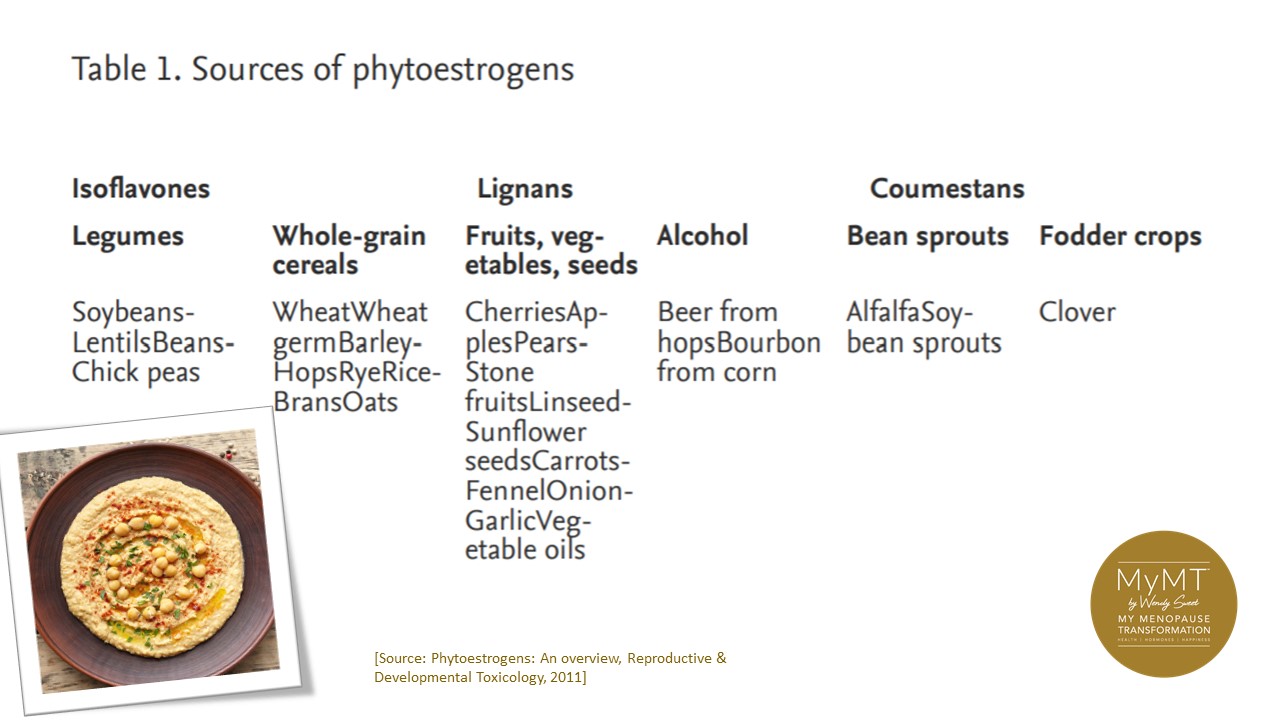
The most commonly occurring sources of phytoestrogens are the flavonoids and lignans group. This is why soy-based products, such as soya milk or tofu are heavily marketed to women when they go into menopause. The main components of soy are proteins, soybean oil and carbohydrates.
With soybeans also containing phytoestrogens called isoflavones, they are claimed to help reduce hot flushes and anxiety in women going through menopause, because their role is exerted on the central nervous system and of course, on the reproductive system.
Isoflavones are most closely related to the bean family of the Fabaceae (i.e., Leguminosae, or bean) family. Legumes, and especially soybeans, have been determined to be among the richest sources of Isoflavones in the human diet. A number of epidemiological studies indicate that the high intake of soy-based products in Asian women, including tofu, may have a protective effect on women’s health as they move into their post-menopause years. (Fin-Jen, He & Chen, H., 2013).
Isoflavones occur in many types of legumes but soybeans typically contain the highest concentrations of isoflavones.
With a similar chemical structure to female oestrogen (one of the main female hormones), they are able to bind to the same receptors that the oestrogen that we produce naturally does.
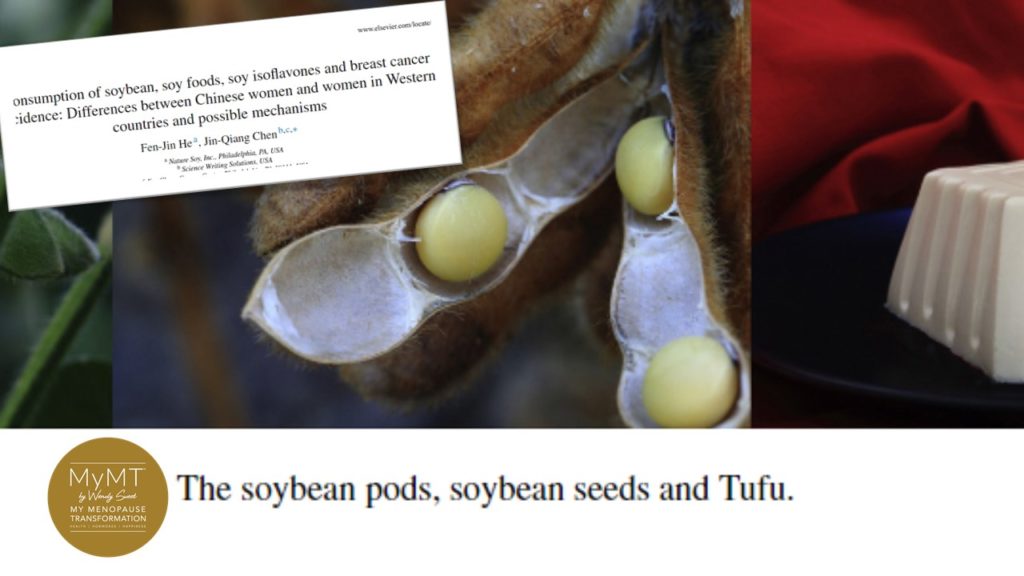
Soybean is called ‘Shu’ in ancient Chinese. It is one of the five main plant foods in China along with rice, wheat, barley and millet. The interest in soybeans in women’s health has emerged because in China and throughout parts of Asia, breast cancer incidence is the lowest in the world (although according to Fin-Jen He and Chen ([2013], this is now rising with the tendency towards more western ways of eating in China).
Soy production has never been so prolific. Soy Products include Edamame (immature soybeans), soybean oils, soybean milk, soybean, soy nuts and also flours and of course tofu, soy sauce, Tempeh and Miso. Tofu is a curd made by coagulating soy protein by mineral salts or acid. It is similar to the cottage cheese in Western cultures, which is coagulated cow’s milk.
Tofu, like other soy products is high in protein and this is a major source of protein in the Chinese diet, where meat supply was not so abundant until recent years. It is also a great source of Calcium which has typically been deficient in the diet of Asian women.
But soy products aren’t for everyone and for my bigger breasted women, I suggest that they keep their soy-latte intake to a minimum. Not because the phyto-oestrogens in soy may or may not be helpful to their symptoms, but because large commercial farms dominant the soy-bean industry so many soy-based products may have unhelpful sprays and pesticide residues that are not so great for our ageing liver – often already over-worked with a lifetime of toxins to clear.
Like many supplements and targeted strategies for menopause, it’s a case of ‘different strokes for different folks‘ and it really is up to women to discover how and if isoflavones work for them, especially if they are aiming to reduce or come-off their HRT along with their Doctor’s support. As I say to many women on the MyMT™ programmes, “there is no harm in trying“.
Wendy Sweet (PhD)/ MyMT Founder & Coach/ Member: Australasian Society of Lifestyle Medicine.
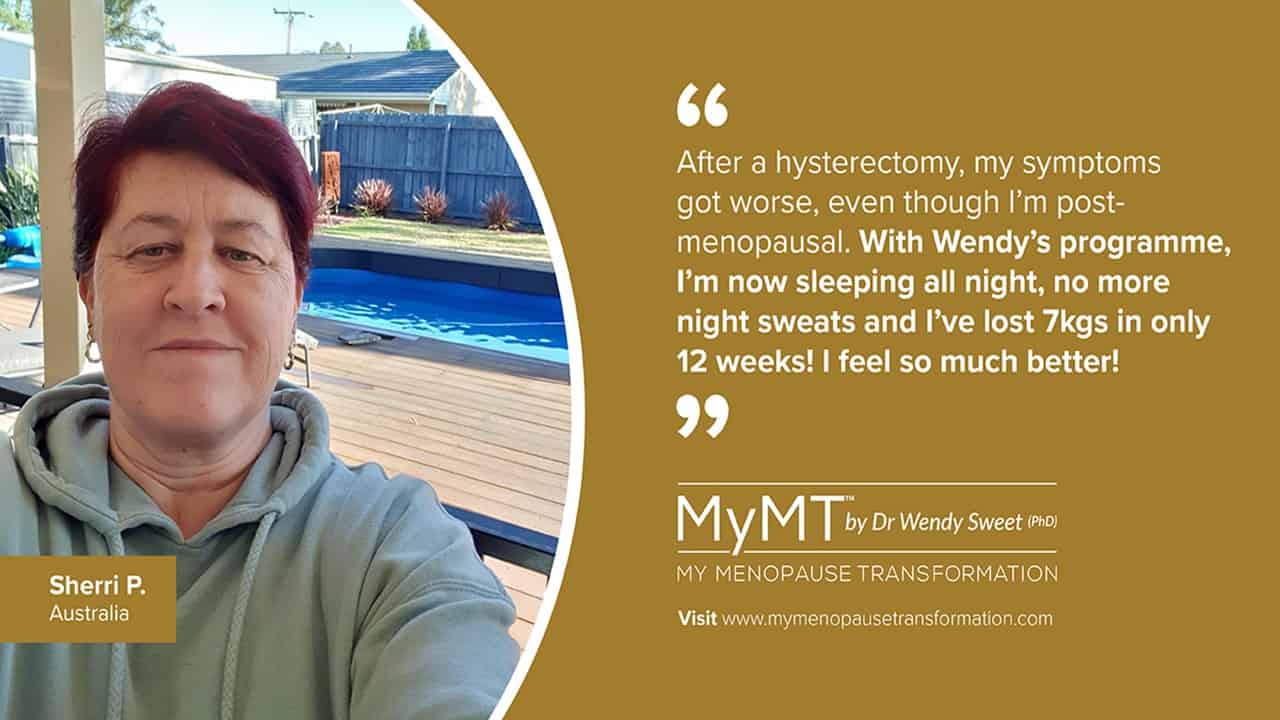
References:
Fin-Jen, He & Chen, H. (2013). Consumption of soybean, soy foods, soy isoflavones and breast cancer incidence: Differences between Chinese women and women in Western countries and possible mechanisms. Food Science and Human Wellness, 2(3-4), 146-161.
Mostrom, M. & Evans, T. (2011). Phytoestrogens, Chapter 52. Reproductive and Developmental Toxicology, Academic Press, pp. 707-722.
Patisaul HB, Jefferson W. (2010). The pros and cons of phytoestrogens. Front Neuroendocrinol. 2010 Oct;31(4):400-19. doi: 10.1016/j.yfrne.2010.03.003. Epub 2010 Mar 27. PMID: 20347861; PMCID: PMC3074428.
jeanhailes.org.au/health-a-z/healthy-living/nutrients/phytoestrogens
